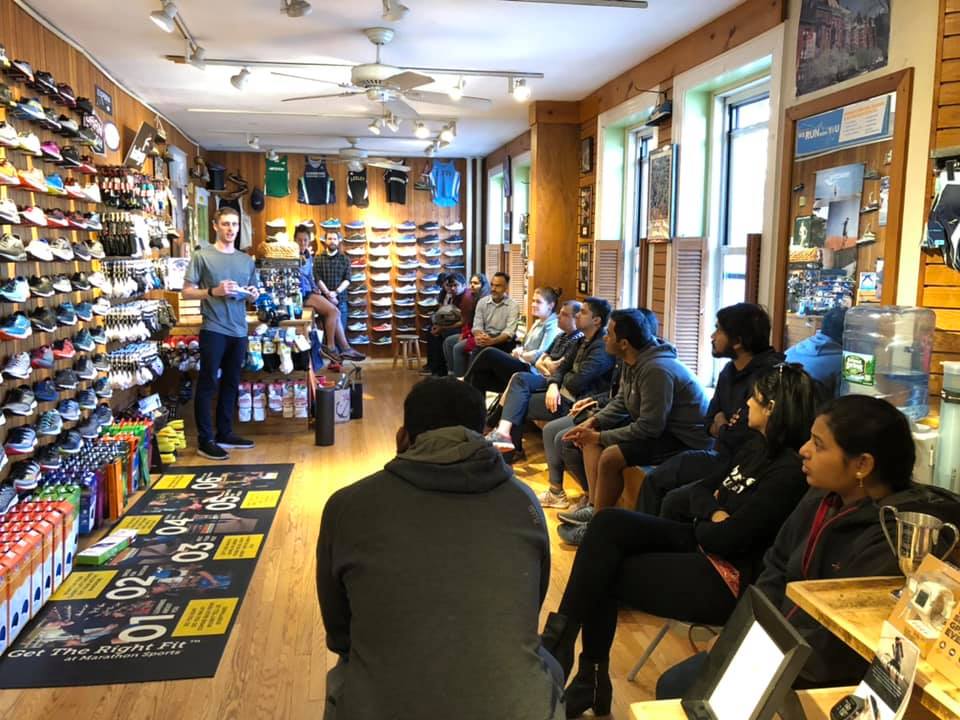Shoe Clinic Notes
Agenda
Shoes
- Introduction to running shoes & bio-mechanics
- Shoe maintenance, best practices
- Running apparel
- Running accessories (socks, fuel belts, GPS, gu, foam roller, body glide,...)
- Q&A
- Personal shoe fitting for those who are buying
Shoes
- There are different types of running shoes (Motion control, Stability, Neutral, Minimalist) to match different types of feet / pronation. Every runner/feet is different. Make sure you get professional help to match your feet to the right type of shoes. As the mileage increases, correctly fitted shoes can make a huge positive difference.
- Make sure to ease into new pair of shoes starting with short runs and slowly increasing mileage once the shoes are confirmed to be the right fit. Marathon Sports store will allow exchanges within 30 days if your new pair becomes uncomfortable
- Minimalist shoes / bare-feet running was a craze a few years ago. It is not recommended for runners who are not used to it.
- A normal shoes can last up to 300 to 400 miles, based on the cushioning needed and your personal preference. You can use apps like Strava to track the mileage on shoes. Full marathoners will need a second pair of new shoes about 3-4 weeks of the marathon date. Half marathoners can use a single pair for the whole season, including the race.
- If you don't mind the looks, you don't have to wash the shoes :-). If you decide to wash, hand-wash is recommended. You can dry wet shoes faster by inserting newspapers inside it. Washing/drying in washer/dryer is not recommended as the glue can come off easily.
- If you are having any feet pain from running that lasts more than a few days, make sure to talk to our coaching team and also get it checked out by a podiatrist who specializes in running injuries. We have listed some of them at our website here.
- Avoid cotton socks, they retain moisture and causes blisters. Synthetic materials that prevent irritation and wick moisture away are the best option. You can pick different lengths (below ankle, above ankle, think, thick, etc) based on the season and personal preference.
- Avoid cotton clothes for running. They retain moisture and will make you cold and uncomfortable during long runs. Make sure to buy synthetic, moisture-wicking clothes like the TeamAIDAsha t-shirts.
- As the mileage increases, you are going to need some or all the following accessories
- Foam roller (demo during stretching clinic). Simple runners are good enough. The ones with knobs may be too painful for beginners.
- Gu gells, chews for some extra boost of energy during long runs
- Body Glide to prevent chafing
- Waist band to keep phone, key without bouncing around during long runs
- Fuel belts to carry small bottles of Gatorade and water during long runs (only needed when you do long runs on your own. TeamAIDAsha provides Gatorade/water stops for Saturday group runs.
- Free running app (Strava) tracks mileage, pace etc. If you would like advanced tracking of your training, heart-rate, etc and you don't mind the extra cost, you can buy advanced GPS watch which could cost up to a few hundred dollars.

